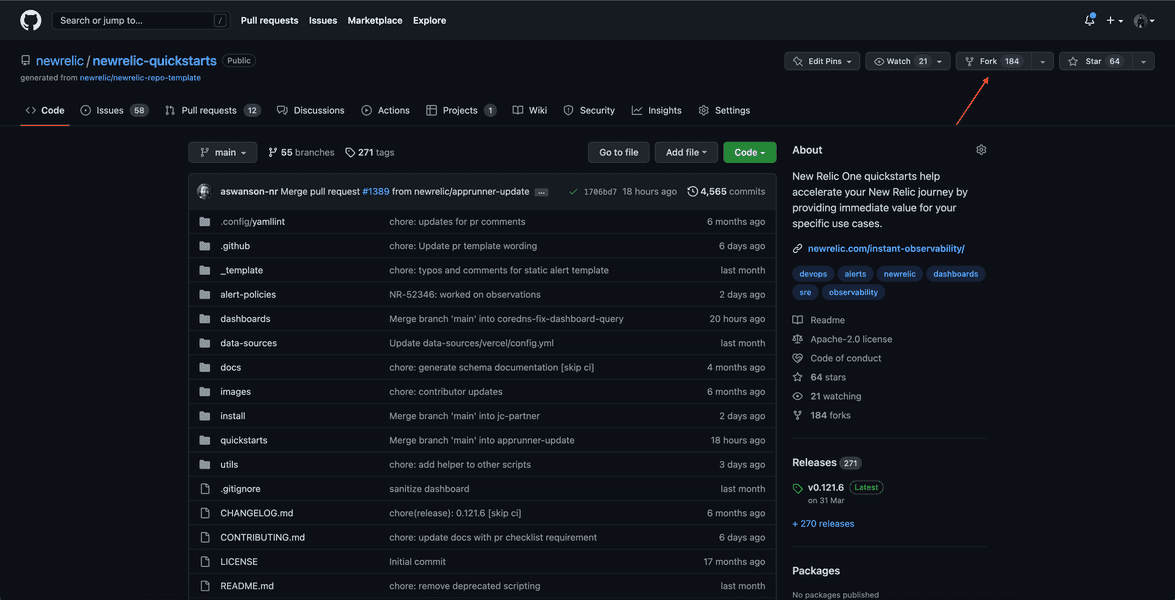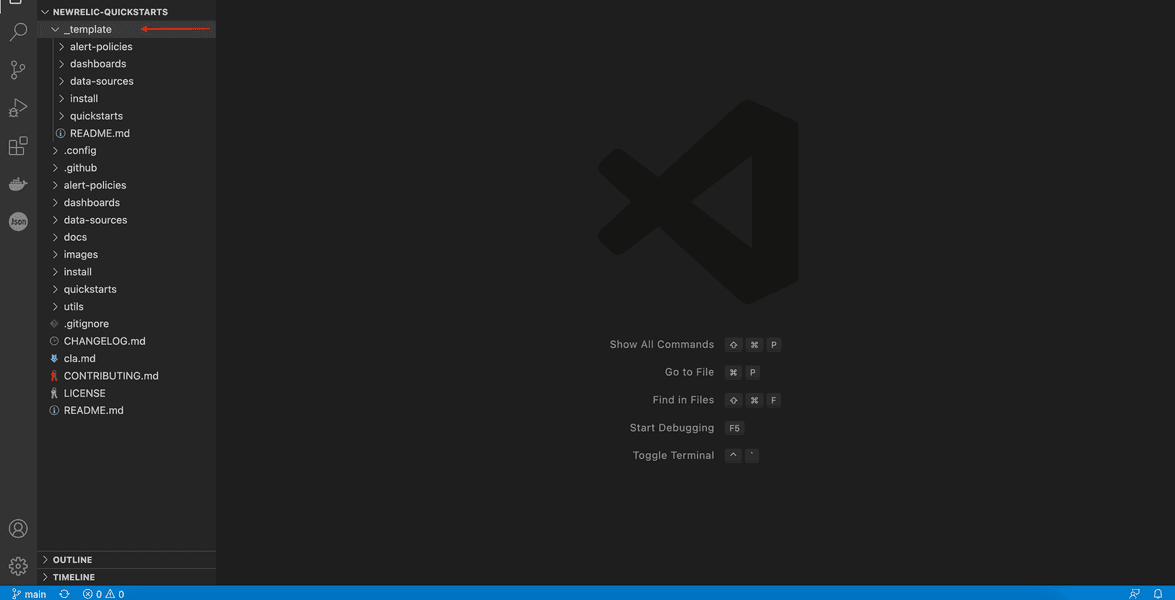Course
This procedure is a part of course that teaches you how to build a quickstart. If you haven't already, checkout the course introduction
As this procedure builds on top of the last ones in the lab, make sure you create a dashboard and alerts before proceeding with this one.
Before you proceed with creating a quickstart, you need to understand it's directory structure.
To get started, navigate to GitHub repository of New Relic quickstarts and fork it.

Now, clone your own repository to your local machine using git clone and open it in the IDE of your choice.
At the root of your cloned project, the directories within the _template folder mirror the directories in the top level of the repository and contains the templates for the respective observability building blocks in the quickstart.

With the recent update to the structure of quickstarts, the _template directory now has the following structure:
alert-policies/ example-alert-policy/ baseline-alert.yml static-alert.yml
dashboards/ example-dashboard/ example-dashboard.json example-dashboard.png
data-sources/ example-data-source/ config.yml logo.svg
quickstarts/ example-quickstart/ config.yml logo.svgEach of these directories contain templates that you can use to create entities for your quickstart. The structure of new contributions should match the structure seen here. You refer the associated dashboardas and alerts in quickstarts config.yml.
In order to build a quickstart, you first need to add it's entities like dashboard and alerts to quickstart.
Course
This procedure is a part of course that teaches you how to build a quickstart. Continue on to next lesson: Add your dashboard to quickstart